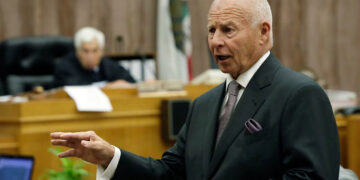On Wednesday, the Supreme Court dealt a significant blow to the Biden-Harris administration’s student loan forgiveness efforts by rejecting a request to lift an injunction on the SAVE plan. This program, designed to exempt certain student loan borrowers from repayment obligations based on their income, remains on hold after the 8th Circuit Court of Appeals paused the broader student loan forgiveness initiative in July.
The SAVE plan, estimated to cost $475 billion over ten years, is part of the administration’s broader strategy to address student debt. However, seven Republican-led states argued that the plan unfairly transfers the burden of debt from borrowers to taxpayers. Senator Bill Cassidy (R-LA), a leading critic of the plan, emphasized that the program doesn’t eliminate debt but shifts its weight onto Americans who either chose not to attend college or have already paid off their loans.
This legal setback follows the Supreme Court’s previous decision to strike down a $400 billion student-debt forgiveness proposal under the HEROES Act. Despite this, President Biden has continued to push forward with debt relief efforts, now seeking to leverage the Higher Education Act to support borrowers.
The financial implications of the SAVE plan are substantial. A report from the University of Pennsylvania’s Wharton School projects that the program will reduce payments on existing and future loans, with about $869 billion in loans potentially receiving enhanced subsidies. Critics argue that this could lead to a significant number of borrowers never making payments, further intensifying the debate over the program’s long-term economic impact.
As the legal battles continue, the future of the Biden-Harris administration’s student loan forgiveness efforts remains uncertain, with the potential for more challenges ahead.




























